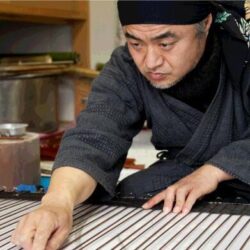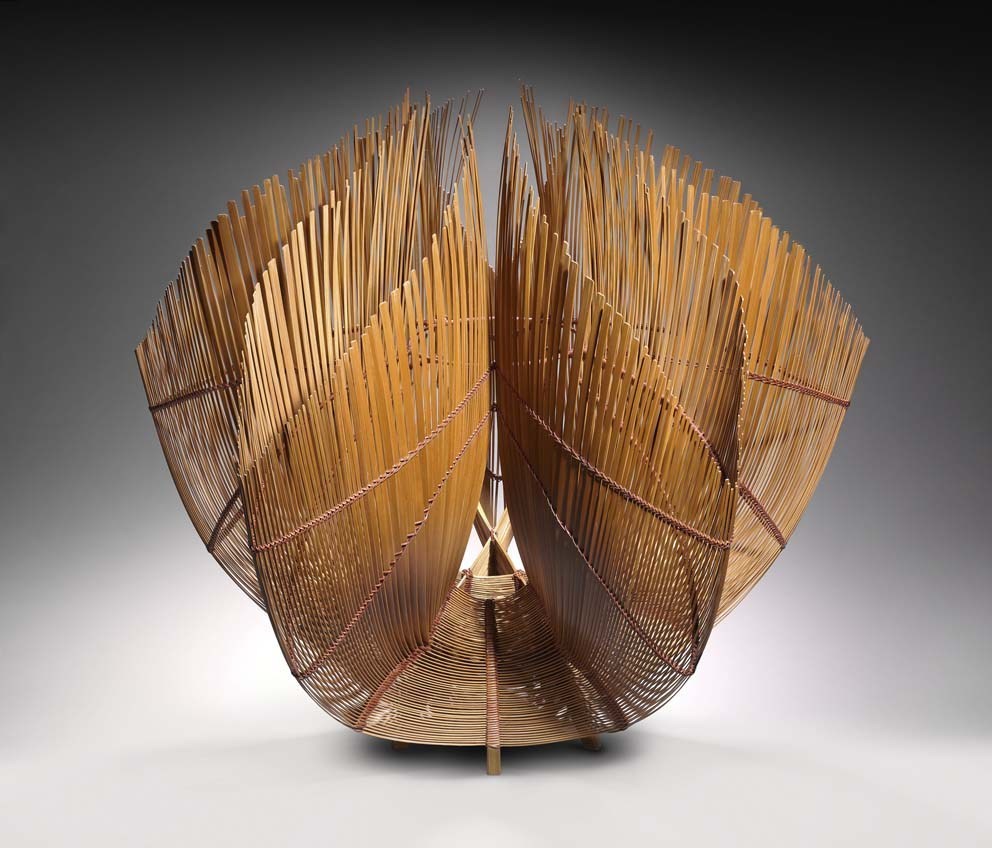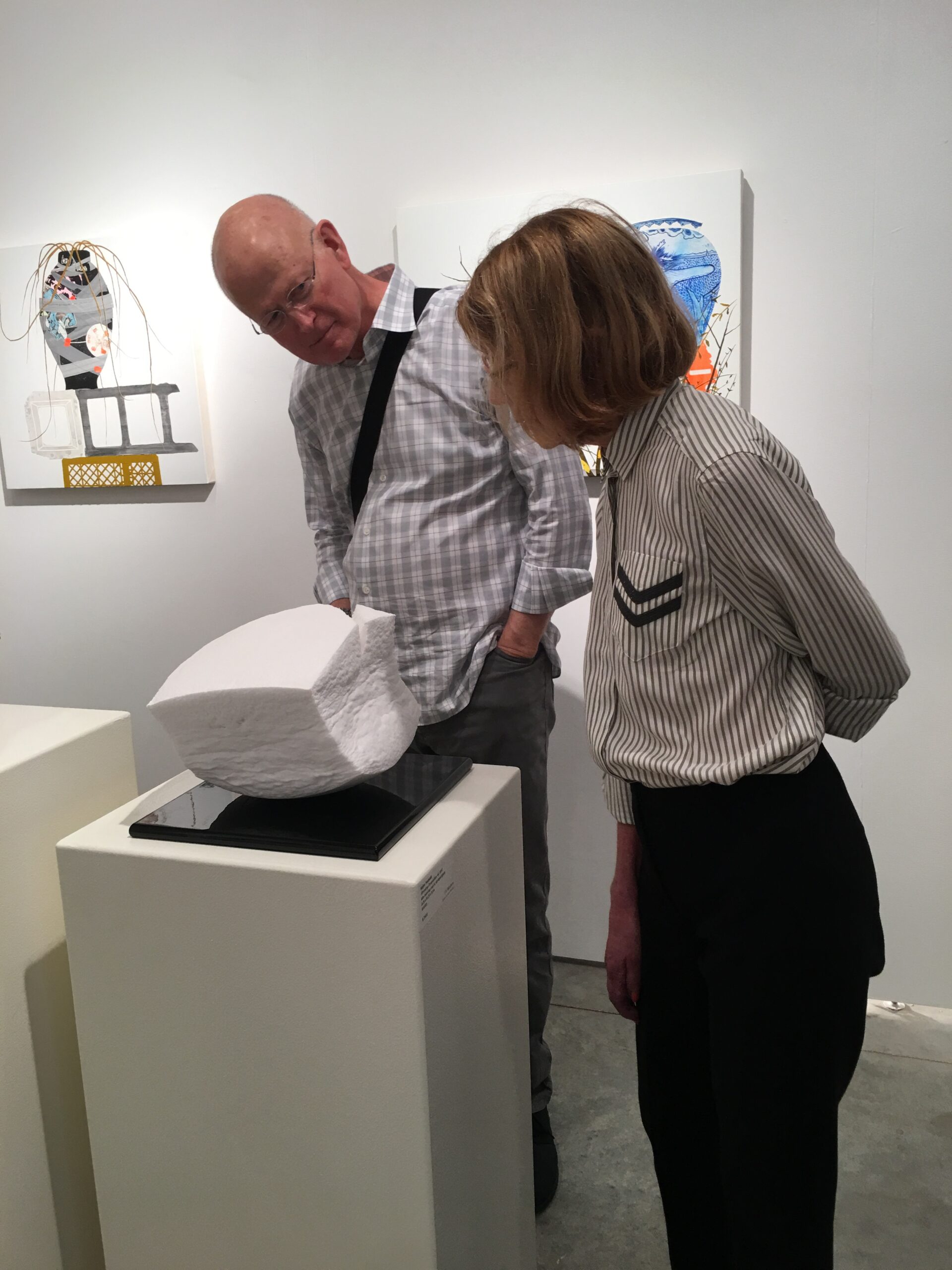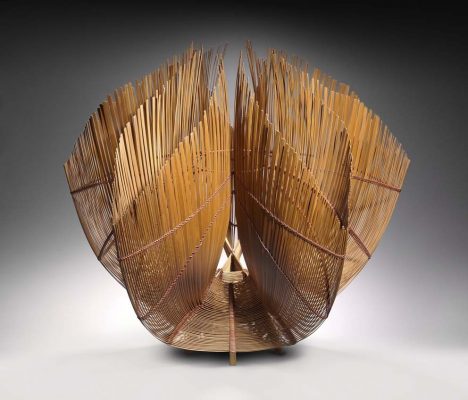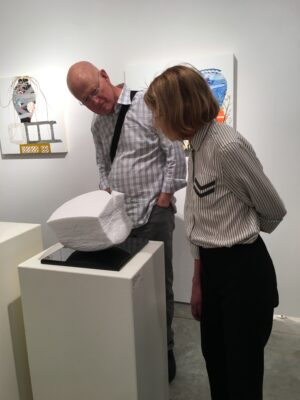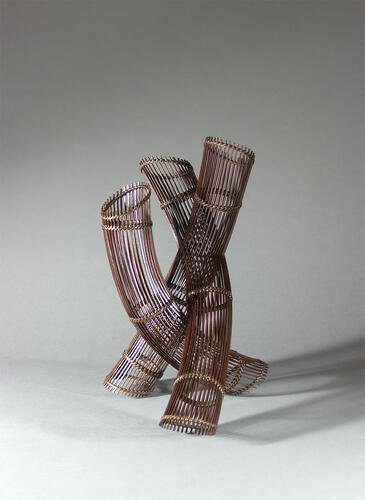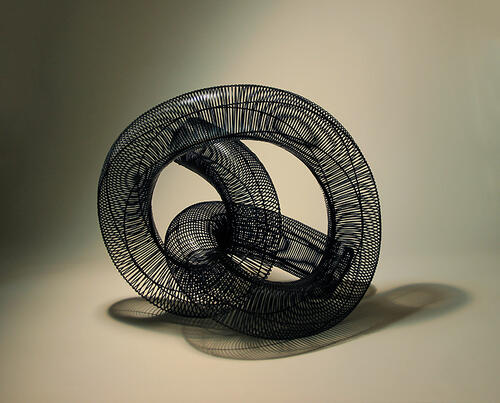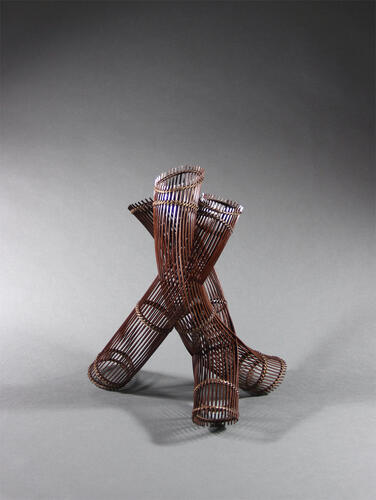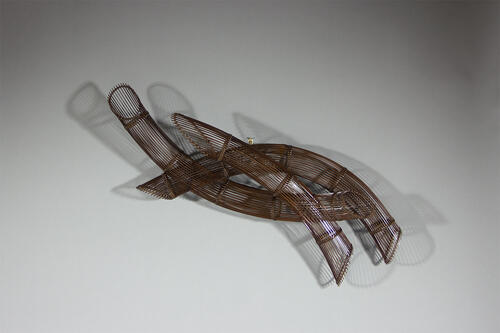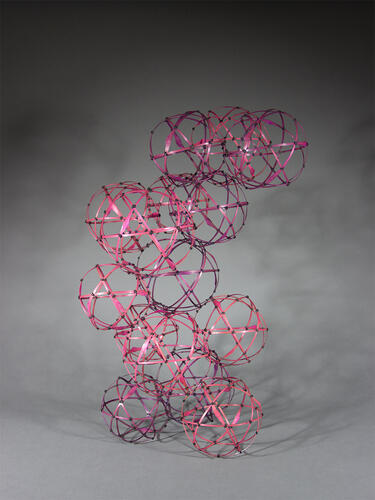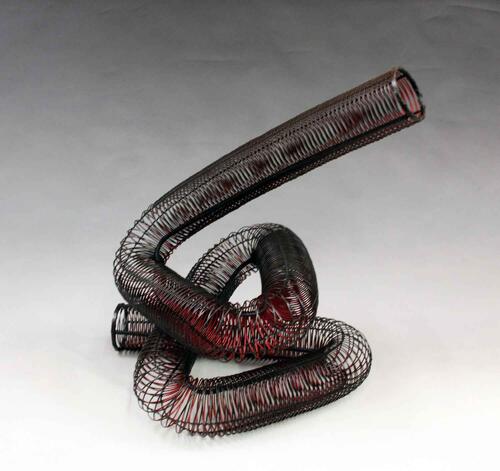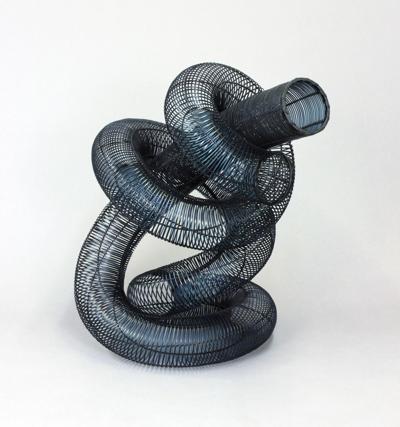
As rough and choppy as the waves might be on the surface of the ocean, when you sink into its depths, there’s a stillness. The human mind, when thoughts, concerns, worries, and fears, are stripped away, likewise becomes still. That was the sentiment that Japanese bamboo artist Watanabe Chiaki sought to convey when he made Calm Mind (2016).
“Calm Mind is like a brush painting in three- dimensional form, a single stroke depiction of being deep down in the ocean and having a calmness in your heart and a positive mind, regardless of the violent storms that may be passing by,” he says.
The sinuous sculpture, on view at TAI Modern (1601 Paseo de Peralta, 505-984-1387, taimodern.com), is 21 by 19.5 inches. It gleams blue and black as its long, serpentine form wraps twice around itself. It is open at one end, inviting you into its labyrinthine folds. The sculpture is made of 2-millimeter-wide concentric bands of rattan and madake bamboo, which is prized by Japanese bamboo artists for its versatility. The outside of the rings are dyed black; the inside is blue. Walking around the sculpture, one gets a sense of its subtle tonality as it shifts from one color to the other, as though it’s reflecting the colors around it.
“People often say it looks like a Slinky,” gallery director Margo Thoma says of the piece. “We don’t usually let people touch it too much, but it kind of wobbles like one, too, if you poke it.”
Thoma explains that madake bamboo is most often used in basketry because it has enough strength and rigidity that it can hold a form and support its own weight. “If you cut it finely — and the nature of the fibers allow you to cut it very finely — it can also become very flexible,” she says. “It kind of hits the sweet spot between two opposing forces.”
Chiaki spent 14 years as a social worker before transitioning to art. He moved to Japan’s remote Sado Island to study at a school for bamboo art under master craftsmen Honma Hideaki and Kawano Shoko. It was on Sado where he was introduced to the shifting color technique used in Calm Mind, which he learned directly from artist Fujitsuka Shosei.
“Originally, [Chiaki] made two pieces that were, compositionally, near images of each other,” Thoma says. “One was blue and black — Calm Mind — and the other was red and black and was kind of intended to represent the idea of passion and dynamism.” Chiaki created the two sculptures as companion pieces representing the dual aspects of heart and mind.

